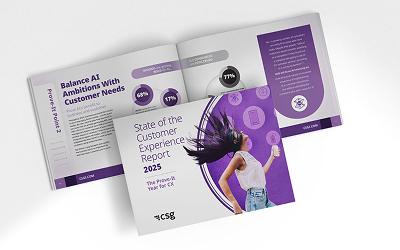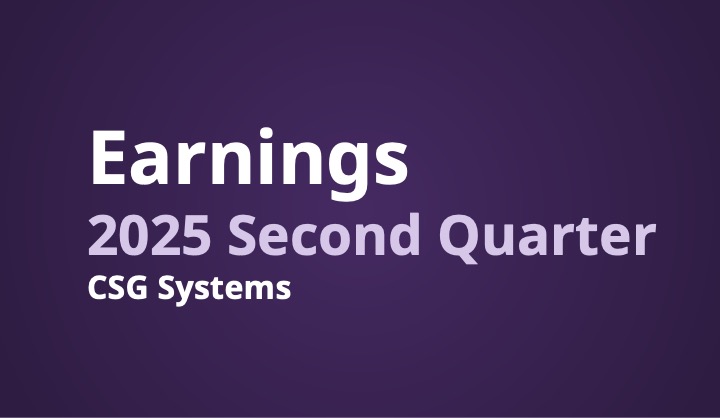“We want your feedback.”
You’ve probably received emails with this subject line shortly after contacting your bank or your internet provider regarding a problem. Many businesses rely on customer satisfaction or Voice of Customer (VoC) surveys to measure and improve customer experience. While surveys are a necessary ingredient in the recipe for better CX, they are not sufficient to produce significant results.
Businesses need customer journey analytics and journey management to truly understand the insight they receive from surveys and improve customer interactions.
What Is a Customer Survey?
A customer survey is a tool businesses use to collect consumer feedback on a variety of topics. Businesses use surveys to measure customer satisfaction and engagement and gauge expectations.
Businesses use several types of surveys to gather feedback: customer satisfaction (CSAT), net promoter score (NPS), customer effort score (CES), and VoC. Most surveys are administered after a particular customer interaction (e.g., purchase, customer service call or technician visit).
Limitations of Customer Surveys
Surveys provide limited perspective and insight
Surveys typically measure a customer’s thoughts and feelings about one product/service or moment in time. But emotions are fleeting—the customer may not feel the same way about other interactions with the business. Someone may be satisfied with their internet provider’s billing process but dissatisfied with their notifications regarding service outages. Qualitative questions (How would you rate the service you received? Good or bad?) are subjective, relying on written responses to answer the question at which point customers may not provide enough specific detail to describe what really happened. How late was the service technician who promised to arrive between 8 and 12? Ten minutes or three hours?
Their insights are difficult to activate
Surveys are retroactive (backward looking), making it impossible to enable proactive changes to CX. Customer feedback is also subject to response bias; people tend to respond inaccurately or falsely to survey questions, whether deliberately or accidentally. There can be a huge difference in what customers say versus what they actually do. Therefore, customer preferences expressed in surveys may not truly reflect their opinions, experiences or future competitors. A survey completed several days after a customer service call is likely fuzzy in detail. Others may only complete surveys following a negative experience. If you only hear from a certain subsection of customers, you won’t learn what your business is doing well or where to improve.
Their lack of information can delay improvement efforts
Survey responses don’t always provide information about the root cause of the negative rating. CX teams must analyze the situation to detect the underlying problem. This means that it may take weeks or even months to improve the processes that resulted in negative feedback. For example, if someone is “extremely dissatisfied” with the customer service agent but doesn’t explain why, it takes time to figure out what happened. How long did the customer wait on hold before speaking with an agent? How many times was the customer transferred to a different agent? Where we sending them ads as they were trying to resolve an issue?
They have limited reach and response rate
According to McKinsey & Co. research, CX surveys only sample 7% of a company’s customers. Customer satisfaction survey response rates range from 10 – 30%. Getting people to open the email is the first step. According to one survey of American adults, only 32% of commercial emails get opened. Then people have to take the time to complete the survey, meaning it’s limited in scope, reach and response.
Surveys Provide Important Data—But Don’t Tell You How to Use It
Surveys help brands get to know their customers—an essential first step for delivering exceptional CX. Survey responses provide a snapshot of people’s needs (e.g., quick problem resolution) and preferences (e.g. prefer to receive appointment reminders via text but billing notifications via email). Customer feedback is a valuable data point to add to the customer data profile. But feedback by itself doesn’t lead to CX improvements.
To improve the customer experience, you need to understand what’s causing customers to be happy or unhappy. That’s where customer journey analytics comes in to play. Journey analytics helps you understand each customer’s journey by tracking and measuring every interaction with your brand, across every channel (e.g., website, email or SMS) and device (e.g., laptop, tablet or smartphone) the customer uses.
Journey analytics helps you understand customer needs, desires and expectations—and how to improve CX—by measuring customer intent indicators (such as intent to purchase or cancel) and service indicators (such as first call resolution, dropped calls or errors) as well as traditional marketing indicators (such as page views, email open rates and clickthrough rates). When you know that the first call was dropped, and then the customer spoke to four agents before the problem was resolved, you can focus your call center improvement efforts in those areas.
Experience the Power of Integrated Journey Analytics and Journey Management
Journey analytics provides insight into what customers experience, their emotions and sentiment at each touchpoint throughout the journey, and what interactions had the largest impact on customer behavior. To take advantage of all that information and show customers you know them, this information must be distilled and decided on within an intelligent journey management system. A system that centralizes all customer feedback and other data from journey analytics to send the right personalized messages at the right time, meeting customers’ needs and expectations.
Our customer experience solution to go beyond surveys is CSG Xponent, purpose-built with a customer data platform, journey orchestration, journey analytics and real-time decisioning at the core of the technology. Xponent delivers the best next action via each customer’s preferred engagement channel. Xponent integrates with your existing systems—CRM, billing, personalization platforms, marketing systems—with no need to rip and replace. You won’t need to purchase multiple systems to understand what your customers need and deliver the superior, personalized experiences they expect. CSG Xponent makes it simple to put each customer front and center.
Ready to do more than customer surveys?










